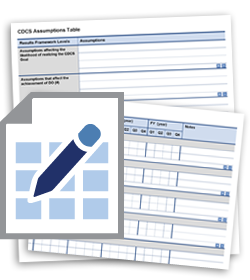- What We Do
- Agriculture and Food Security
- Democracy, Human Rights and Governance
- Economic Growth and Trade
- Education
- Environment and Global Climate Change
- Gender Equality and Women's Empowerment
- Global Health
- Humanitarian Assistance
- Transformation at USAID
- Water and Sanitation
- Working in Crises and Conflict
- U.S. Global Development Lab
Speeches Shim

Meet the Challenge of Rising Standards.
USAID’s wide-ranging effort to modernize foreign assistance, spotlights the importance of high-quality monitoring and evaluation, along with active-learning and adaptive management strategies at all levels. This toolkit brings together the guidance, templates, examples, and checklists you need in order to work efficiently and excel at monitoring, evaluation, and learning (MEL) in USAID trade-facilitation projects and activities.
UP-TO-DATE GUIDANCE |
EDITABLE PDF TEMPLATES |
BUILD YOUR SKILLS |
|---|---|---|
| Stay current with the latest USAID guidance and developments tailored to trade facilitation—all in one place. This E3 Toolkit guidance is current with USAID’s policies and requirements, including the 6/11/2019 update of USAID’s Automated Directives System (ADS), which consolidated several directives into a consolidated Program Cycle Operational Policy (ADS 201), and was fully reviewed by 10/31/19. | Work more efficiently using our interactive, pre-formatted PDF templates to produce required tables and graphics for your CDCS, PMP or project design where an approved USAID template doesn't exist. Write your evaluation SOW or final evaluation report with our templates, too. Then save, edit, email, print or embed your finished templates into a Microsoft Word document. The Program Cycle Road Map is a good place to start. | Use this flexible, self-guided toolkit between USAID training courses to expand and strengthen your design, monitoring and evaluation skills. Work at your own pace on your own schedule. Navigate different paths of the toolkit depending on your needs, using toolkit materials as a resource you can refer back to over time. |
Choose your own path through the Toolkit:
| For a reference guide and overview of the contents of this toolkit, download the Desktop Guide to the E3 Trade Facilitation Monitoring, Evaluation and Learning (MEL) Toolkit. |
| Follow the Program Cycle menu if you are working on a particular Program Cycle task. This route through the E3 website will help you develop a CDCS and its PMP, a Project Design and associated MEL Plan. It will also help you implement performance monitoring and evaluation commitments your Operating Unit has made. The Program Cycle Road Map is a good place to start. |
| Select the Topical Pathways menu if you want to improve your understanding of how USAID approaches monitoring, evaluation, and learning throughout the Program Cycle at the program, project, and activity level and are interested in acquiring tools that support these kinds of work. |
| For trade specific guidance, select Trade Pathways under the Topical Pathways menu. It will help understand how standard USAID MEL approaches and tools can be applied in trade projects and activities. |
ProjectStarterBETTER PROJECTS THROUGH IMPROVED |
A toolkit developed and implemented by: For more information, please contact Paul Fekete. |

Comment
Make a general inquiry or suggest an improvement.